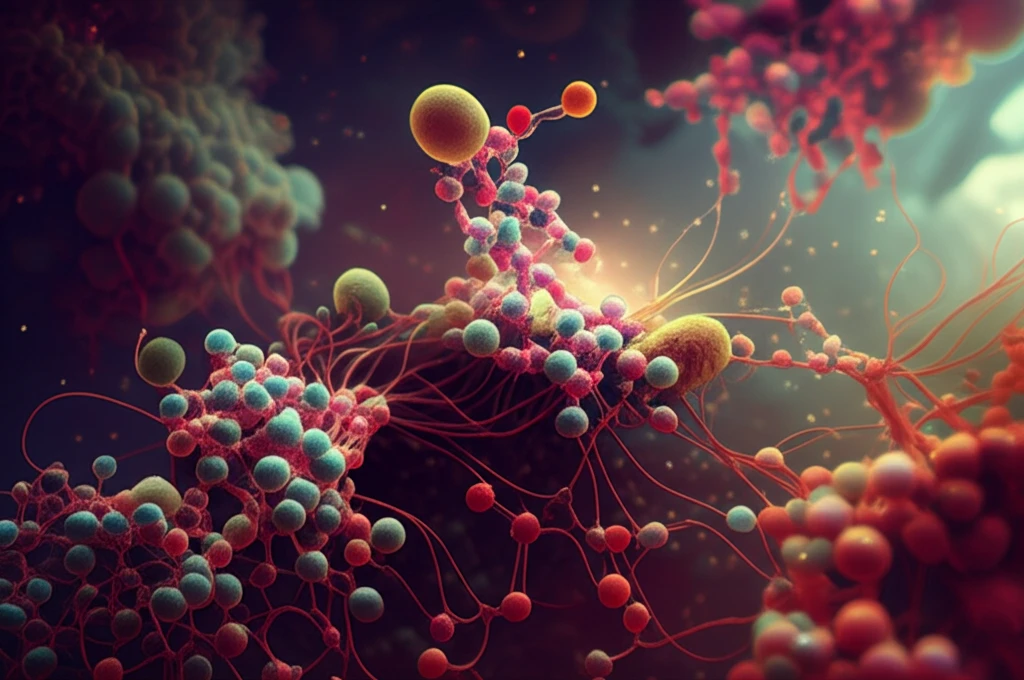
Unlock Chiral Secrets: How Scientists Are Revolutionizing Hydroxyalkanoic Acid Production
"Discover the groundbreaking process of asymmetric oxidation using Rhodococcus sp. 2N and its potential for creating revolutionary polymers and pharmaceutical intermediates."
Optically active hydroxyalkanoic acids are valuable building blocks in the world of pharmaceuticals, chiral synthons (chiral molecules that can be converted to other chiral molecules), and functional polymers. These compounds are like specialized Lego bricks that allow scientists to construct complex molecules with specific properties. Because of their usefulness, researchers are constantly seeking efficient methods to synthesize these valuable molecules.
One promising approach involves enzymatic synthesis, which uses biological catalysts to perform chemical reactions. Enzymatic synthesis can be achieved through two primary reactions: the hydroxylation of terminal methyl groups on alkanoic acids (adding an alcohol group) and the oxidation of unilateral hydroxymethyl groups of diols (converting an alcohol group to a carboxylic acid).
Recently, scientists have focused on using microbial asymmetric oxidation to produce hydroxyalkanoic acids. For instance, specific strains of bacteria like Gluconobacter and Acetobacter can convert 2-methyl-1,3-propanediol into (R)-3-hydroxy-2-methylpropanoic acid with high optical purity. However, creating hydroxyalkanoic acids from 2,2-disubstituted-1,3-propanediols remains largely unexplored. Now, researchers are exploring the potential of using Rhodococcus sp. 2N, a bacterium known for its ability to oxidize 1,3-propanediols, to synthesize chiral hydroxyalkanoic acids. This research is an exciting step towards expanding the toolkit for producing advanced materials and pharmaceuticals.
How Does Rhodococcus sp. 2N Transform Propanediols?

The researchers isolated Rhodococcus sp. 2N from soil samples through a method called enrichment culture, using 2,2-diethyl-1,3-propanediol (DEPD) as the main source of carbon. This process is like setting up a buffet that only one type of organism enjoys, allowing that organism to thrive while others diminish. They then optimized the conditions for this strain, finding that adding 0.3% (w/v) DEPD to the culture medium significantly boosted its activity.
- Optimizing Culture Conditions: The highest activity of Rhodococcus sp. 2N was observed when cultured with 0.3% (w/v) DEPD as an inducer.
- (R)-Selective Oxidation: The strain preferentially catalyzed the (R)-selective oxidation of EMPD, producing a specific chiral form.
- Reaction Pathway: Only one hydroxymethyl group of the propanediols was converted to a carboxy group via two oxidation steps.
What's Next for Hydroxyalkanoic Acid Production?
This research opens the door to new possibilities in synthesizing valuable chiral molecules. By understanding and optimizing the enzymatic processes of Rhodococcus sp. 2N, scientists can potentially create more efficient and sustainable methods for producing hydroxyalkanoic acids. Further exploration of different microbial strains and enzymatic reactions could lead to even greater advancements in pharmaceuticals, materials science, and other fields. The development of novel functional polymers and more efficient asymmetric oxidation systems promises exciting innovations for a wide range of applications.
